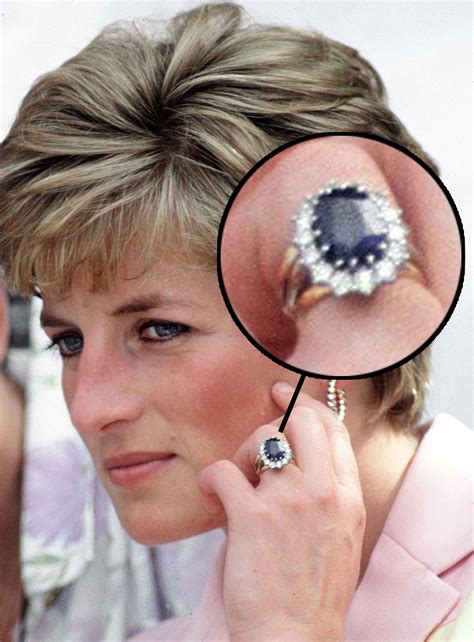
A golden retriever puppy, overwhelmed by the sheer exuberance of a recent play session, succumbed to a “cuteness overload” after an impressive display of zoomies, charming viewers worldwide.
A viral video capturing the adorable collapse of a golden retriever puppy after an intense bout of “zoomies” has captured the hearts of internet users. The puppy, identified as Boone, was seen dashing around with boundless energy before abruptly succumbing to exhaustion, collapsing in a heap of fluffy golden fur, a scene dubbed a “cuteness overload” by online commentators. The video, initially posted on social media platforms, quickly gained traction, accumulating millions of views and shares across various online channels.
According to Boone’s owner, the puppy’s energetic bursts, commonly known as “zoomies” or Frenetic Random Activity Periods (FRAPs), are a regular occurrence. “He gets the zoomies pretty much every day,” the owner stated in an interview. “He’ll run around, get all excited, and then just crash.” The video perfectly encapsulates this cycle, showcasing Boone’s unbridled enthusiasm followed by an immediate and complete surrender to sleep.
The incident has sparked widespread discussion about the behavior of puppies and the phenomenon of zoomies. Animal experts explain that zoomies are a normal and healthy way for young dogs to release pent-up energy and excitement. “It’s a completely natural behavior,” explains Dr. Emily Carter, a veterinarian specializing in canine behavior. “Puppies have a lot of energy, and zoomies are a way for them to burn it off. It’s often triggered by excitement, such as after a bath or when their owners come home.”
The video’s popularity also underscores the universal appeal of puppies and their endearing antics. The combination of Boone’s fluffy appearance, playful energy, and sudden exhaustion resonated with viewers of all ages and backgrounds. Social media users flooded the comments section with expressions of amusement, affection, and empathy for the exhausted pup. “That’s exactly how I feel after a long day,” wrote one commenter. “Boone is all of us,” quipped another.
The golden retriever breed, known for its friendly and playful disposition, is particularly prone to zoomies. Their high energy levels and love of activity make them ideal candidates for these bursts of frenetic movement. However, it’s important for owners to ensure that their puppies have a safe and appropriate environment to engage in zoomies. “Make sure they have plenty of space to run around without obstacles that could cause injury,” advises Dr. Carter. “A fenced-in yard or a large indoor area is ideal.”
Furthermore, owners should be mindful of their puppy’s physical limitations. While zoomies are generally harmless, it’s important to monitor puppies for signs of fatigue or overheating. “If your puppy starts panting heavily or seems unsteady on their feet, it’s time to stop the zoomies and let them rest,” cautions Dr. Carter. Providing puppies with adequate rest and hydration is crucial for their overall health and well-being.
The “cuteness overload” experienced by Boone has not only brought joy to millions of viewers but has also served as a reminder of the simple pleasures of puppyhood. The video’s viral success highlights the enduring appeal of animals and their ability to brighten our lives. As Boone continues to capture hearts online, his owners are committed to providing him with a safe, loving, and stimulating environment where he can continue to express his boundless energy and adorable personality.
The phenomenon of zoomies is not limited to puppies; adult dogs can also experience these bursts of energy. However, the frequency and intensity of zoomies tend to decrease as dogs mature. Older dogs may still engage in zoomies occasionally, but they are typically less frequent and less energetic than those of puppies.
Several factors can trigger zoomies in dogs, including excitement, stress, and boredom. Dogs may also experience zoomies after being confined for a long period of time, such as after a long car ride or a stay in a crate. In some cases, zoomies may be a sign of underlying medical conditions, such as hyperthyroidism or neurological disorders. If you are concerned about your dog’s zoomies, it is important to consult with a veterinarian.
While zoomies are generally harmless, it is important to take precautions to ensure your dog’s safety. Make sure your dog has plenty of space to run around without obstacles that could cause injury. Avoid letting your dog zoomie near roads or other dangerous areas. If your dog is prone to zoomies, it is a good idea to keep them on a leash when you are in public places.
The viral video of Boone’s “cuteness overload” has sparked a renewed interest in the behavior of puppies and the joy they bring to our lives. As Boone continues to charm viewers around the world, his story serves as a reminder of the importance of providing our furry friends with love, care, and plenty of opportunities to express their natural exuberance.
The golden retriever breed’s popularity, fueled in part by their adorable antics and affectionate nature, makes them a sought-after family pet. However, prospective owners should be aware of the breed’s high energy levels and need for regular exercise. Golden retrievers require a significant amount of physical activity to stay healthy and happy. Daily walks, runs, and play sessions are essential for keeping them mentally and physically stimulated. Without adequate exercise, golden retrievers can become bored and destructive.
In addition to their exercise needs, golden retrievers also require a significant amount of socialization. They are naturally friendly and outgoing dogs, but they need to be exposed to a variety of people, places, and situations to develop into well-adjusted adults. Early socialization is crucial for preventing fear and aggression later in life.
Golden retrievers are also prone to certain health problems, such as hip dysplasia, elbow dysplasia, and cancer. Prospective owners should be aware of these potential health issues and choose a reputable breeder who screens their dogs for these conditions. Regular veterinary checkups are also essential for maintaining the health of a golden retriever.
Despite these challenges, golden retrievers make wonderful companions for the right owners. Their affectionate nature, playful energy, and intelligence make them a joy to have around. With proper care and training, golden retrievers can bring years of love and happiness to their families.
The viral video of Boone’s “cuteness overload” has also sparked a discussion about the ethical considerations of breeding and owning dogs. Some animal welfare advocates argue that the demand for popular breeds like golden retrievers can lead to unethical breeding practices, such as puppy mills. Puppy mills are commercial breeding facilities that prioritize profit over the health and welfare of the animals. These facilities often house dogs in overcrowded and unsanitary conditions, and they may neglect to provide them with adequate veterinary care.
Prospective dog owners can help to combat puppy mills by adopting dogs from shelters or rescues, or by choosing a reputable breeder who prioritizes the health and welfare of their animals. Reputable breeders will allow prospective owners to visit their facilities and meet the dogs, and they will be transparent about their breeding practices. They will also screen their dogs for genetic health problems and provide them with appropriate veterinary care.
The decision to own a dog is a significant one, and it is important to consider the ethical implications of pet ownership. By making informed choices about where to acquire a dog, prospective owners can help to promote ethical breeding practices and improve the lives of animals.
The internet’s fascination with Boone’s zoomies and subsequent collapse highlights the power of social media to connect people through shared experiences of joy and amusement. The video’s widespread appeal demonstrates the universal appeal of animals and their ability to brighten our lives. In a world often filled with negativity and conflict, Boone’s “cuteness overload” provides a welcome respite and a reminder of the simple pleasures of life.
The ongoing popularity of animal videos online also reflects a growing awareness of animal welfare and a desire to connect with the natural world. As more people become aware of the challenges facing animals, they are increasingly drawn to stories that celebrate their resilience, intelligence, and beauty. Animal videos provide a window into the lives of animals and help to foster empathy and compassion.
The viral success of Boone’s video is a testament to the enduring power of animals to capture our hearts and minds. As Boone continues to charm viewers around the world, his story serves as a reminder of the importance of providing our furry friends with love, care, and plenty of opportunities to express their natural exuberance. The video also underscores the importance of responsible pet ownership and the need to protect the welfare of all animals.
Zoomies are typically characterized by frantic, repetitive behaviors such as running in circles, spinning, and play-bowing. These behaviors are often accompanied by exaggerated facial expressions and vocalizations, such as barking and panting. The duration of zoomies can vary from a few seconds to several minutes, depending on the dog’s energy level and the environment.
While zoomies are generally considered to be a normal and healthy behavior, it is important to be aware of the potential risks. Dogs can injure themselves during zoomies if they run into obstacles or slip on slick surfaces. It is also important to ensure that zoomies do not become disruptive or dangerous to others. If your dog’s zoomies are causing problems, it is important to consult with a veterinarian or a certified dog trainer.
There are several things you can do to help your dog manage their zoomies. First, make sure your dog gets plenty of regular exercise. This will help to burn off excess energy and reduce the likelihood of zoomies. Second, provide your dog with plenty of mental stimulation. This can include puzzle toys, training sessions, and interactive games. Third, create a safe and comfortable environment for your dog. This will help to reduce stress and anxiety, which can trigger zoomies.
The popularity of Boone’s video also highlights the importance of providing dogs with opportunities to engage in natural behaviors. Zoomies are a natural way for dogs to release pent-up energy and express their joy. By providing dogs with plenty of exercise, mental stimulation, and a safe environment, we can help them to live happy and fulfilling lives.
In addition to the physical benefits of zoomies, there are also mental and emotional benefits. Zoomies can help to reduce stress and anxiety, improve mood, and promote social bonding. When dogs engage in zoomies with their owners, it strengthens the bond between them and creates positive associations.
The viral video of Boone’s “cuteness overload” has reminded us all of the joy and laughter that dogs bring to our lives. As Boone continues to capture hearts online, his story serves as a reminder of the importance of providing our furry friends with love, care, and plenty of opportunities to express their natural exuberance.
The trend of sharing animal videos online is likely to continue, as people increasingly seek out sources of joy and connection in a digital world. These videos provide a window into the lives of animals and help to foster empathy and compassion. As we continue to learn more about the complex lives of animals, we are increasingly drawn to stories that celebrate their resilience, intelligence, and beauty.
Boone’s story is a reminder that even the simplest moments in life can be filled with joy and wonder. The next time you see a dog engaging in zoomies, take a moment to appreciate the beauty and exuberance of life. And remember to provide your own furry friends with plenty of opportunities to express their natural joy.
Frequently Asked Questions (FAQ):
Q1: What are “zoomies,” and why do puppies like Boone experience them?
A: “Zoomies,” also known as Frenetic Random Activity Periods (FRAPs), are bursts of energy that are completely normal, especially in puppies. Dr. Emily Carter, a veterinarian specializing in canine behavior, explains they are a natural way for puppies to release pent-up energy and excitement, often triggered after activities like baths or when owners return home. Golden retrievers, with their high energy, are particularly prone to zoomies.
Q2: Is it safe for puppies to engage in zoomies, and what precautions should owners take?
A: Zoomies are generally safe, but precautions are necessary. Owners should ensure a safe environment with ample space, free of obstacles that could cause injury. A fenced-in yard or a large indoor area is ideal. Dr. Carter advises monitoring puppies for fatigue or overheating, recommending rest and hydration if they start panting heavily or seem unsteady.
Q3: Are zoomies only a puppy behavior, or do adult dogs also experience them?
A: While more common and intense in puppies, adult dogs can also experience zoomies. The frequency and intensity tend to decrease as dogs mature. Older dogs may still engage in zoomies, but they are typically less frequent and less energetic than those of puppies.
Q4: What can trigger zoomies in dogs, and could they ever be a sign of a medical problem?
A: Several factors can trigger zoomies, including excitement, stress, boredom, or confinement. While usually harmless, zoomies can sometimes indicate underlying medical conditions like hyperthyroidism or neurological disorders. It is important to consult a veterinarian if you have any concerns about your dog’s zoomies.
Q5: What are the specific needs of golden retrievers, and what ethical considerations should potential owners be aware of?
A: Golden retrievers require a significant amount of exercise and socialization. Daily walks, runs, and play sessions are essential. They also need exposure to various people, places, and situations to develop into well-adjusted adults. Ethically, potential owners should be aware of the risk of supporting puppy mills, commercial breeding facilities that prioritize profit over animal welfare. Adopting from shelters or choosing reputable breeders who screen for genetic health problems is crucial.









